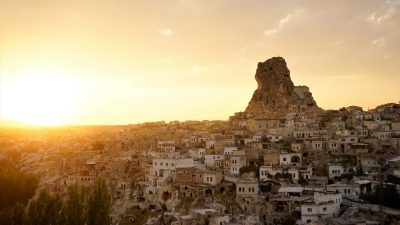Tibet’s Forgotten Tragedy And The Unheeded Lessons For Disaster Preparedness
1. The Gulang Earthquake of 1927: An Unseen Catastrophe that Changed Tibet Forever
The 1927 Gulang Earthquake, which struck Tibet’s remote regions, remains one of the most devastating seismic events in the area’s history. With limited access to the region and minimal international attention, the earthquake has often been overshadowed by other global disasters. However, its impact was profound, and its effects lingered long after the earth stopped trembling. The shockwaves of this catastrophe not only led to thousands of deaths but also exposed Tibet’s vulnerability in the face of such natural disasters. For a nation already struggling with its own challenges, the Gulang earthquake was a wake-up call that highlighted the urgent need for infrastructural improvement and better preparedness.
The earthquake reshaped the region, both in terms of human cost and in how it influenced the future development of Tibet. The destruction of villages, roads, and essential infrastructure left Tibet’s population isolated and vulnerable. Despite this, the aftermath did not prompt immediate global assistance, and it took years for the area to recover fully. This event, which should have been a turning point in disaster management, remains a largely forgotten chapter in history.
2. How the 1927 Gulang Earthquake Exposed Tibet’s Vulnerability to Natural Disasters
- Lack of Preparedness: Tibet, particularly the Gulang region, was severely unprepared for such a powerful earthquake. The remote nature of the area meant that no disaster management protocols were in place, and the community had no prior experience with earthquakes of this magnitude.
- Poor Infrastructure: The region’s infrastructure was ill-equipped to withstand the forces of a major earthquake. With inadequate buildings and roads, the destruction was widespread and swift, leading to a significant loss of life.
- Limited External Support: Due to Tibet’s isolation and political climate at the time, there was very little external aid available. This lack of support compounded the crisis, making recovery even more difficult for the affected population.
3. Was Tibet Ready? How the Gulang Earthquake Struck a Weak, Unprepared Region
Tibet’s lack of preparedness for the 1927 Gulang Earthquake became evident almost immediately as the earth shook. The rural and isolated areas of Tibet, particularly in Gulang, had limited access to advanced engineering or disaster planning. Villages were made up of traditional structures that were not earthquake-resistant, contributing to a high death toll. The local population was also untrained in emergency response procedures, further complicating efforts to deal with the aftermath.
In addition to the lack of preparedness, the government had not invested in the region’s infrastructure to make it resilient against natural disasters. The earthquake’s devastating effect exposed the stark reality of how vulnerable Tibet was to such events. This lack of planning left communities without resources or the ability to recover in a timely manner, leading to a prolonged period of hardship for the survivors.
4. Gulang Earthquake 1927: The Earth Trembled, but Were We Listening?
When the earth trembled in Gulang in 1927, the world seemed to turn a blind eye. With minimal reporting from the region and a lack of technological means to communicate the scale of the disaster, the earthquake was largely ignored by global media outlets. This oversight meant that the earthquake’s true devastation went unrecognised, especially when compared to other international natural disasters of the same period.
Moreover, the silence surrounding the disaster left Tibet isolated in its time of need. While the tremors reverberated through the earth, the echoes of the catastrophe never reached the ears of the international community. The failure to address such a significant event underlines a major flaw in disaster awareness during the time and remains a pertinent reminder of the need for proper communication networks in disaster-stricken regions.
5. Tibet’s Unspoken Disaster: The Hidden Aftermath of the Gulang Earthquake
The 1927 Gulang Earthquake, while tragically severe, left an aftermath that was not only physical but psychological. Communities that survived the tremors had to face the emotional scars of losing loved ones, homes, and livelihoods. The earthquake destroyed not just structures but entire ways of life, leaving Tibetans to rebuild from the ground up. In addition to the loss of life, the infrastructure damage was catastrophic. Roads, bridges, and communication lines were destroyed, leaving remote villages cut off from help.
What followed was a slow and painful recovery. With minimal aid from the government and no international attention, the recovery process was stretched over many years. The local population, relying on their own resilience, had to rebuild their homes, but the psychological toll of such a disaster haunted the survivors for generations. Tibet’s isolation and the lack of immediate assistance became critical barriers to fast recovery, contributing to the lasting legacy of the earthquake’s devastation.
6. Lives Lost, Lands Shattered: The Lasting Impact of the Gulang Earthquake
The toll of the 1927 Gulang Earthquake on both the human population and the landscape of Tibet was immense. Thousands of lives were lost, and entire communities were reduced to rubble. In addition to the direct human cost, the physical environment of Tibet was left shattered. The earthquake caused significant damage to the landscape, triggering landslides that blocked roads and disrupted essential supply lines. The resulting isolation from other parts of Tibet and the world compounded the disaster’s impact, as aid was not easily able to reach the affected regions.
The land itself, already fragile due to the harsh environment, was left scarred. Water sources were contaminated, and agricultural land was destroyed, leading to food shortages that further aggravated the situation. The long-lasting impacts on both the physical and human geography of the region were severe and took decades to fully recover from.
7. The Gulang Earthquake: A Catalyst for Change or a Forgotten Tragedy?
In the years following the Gulang Earthquake, one question remained: did the disaster become a catalyst for change, or was it simply another forgotten tragedy in Tibet’s history? While the earthquake highlighted the glaring vulnerabilities of the region, it did not prompt immediate changes in infrastructure or governance. The Tibetans were left to deal with the consequences largely on their own, and there was little effort from the central government to improve disaster preparedness or response.
Yet, in some ways, the earthquake did set the stage for later reforms. As the international community began to take more interest in Tibet’s internal affairs, the event served as a reminder of the need for better disaster response systems. However, the reforms were slow, and the memories of the disaster faded as time passed. The Gulang Earthquake ultimately remains a symbol of missed opportunities for meaningful change in disaster management.
8. 1927 Gulang Earthquake: The Earthquake That Should Have Shaken the World
- Limited International Attention: Despite the scale of the devastation, the earthquake received minimal attention from global media. This lack of international coverage meant that the scale of the disaster was not fully understood, and help was not mobilised in time.
- Government Inaction: The central government failed to provide immediate relief, leaving local communities to fend for themselves. The aftermath of the earthquake exposed significant flaws in Tibet’s governmental structures and its ability to respond to natural disasters.
- Lessons Unlearnt: Despite the tragedy, Tibet and the world failed to learn key lessons from the Gulang Earthquake. There were no significant improvements in disaster preparedness, and the event is often overlooked in the broader history of earthquakes.
9. After the Earth Stilled: The Long Journey to Recovery for Tibet Post-1927 Gulang Earthquake
The recovery process in the wake of the 1927 Gulang Earthquake was long and arduous. With limited resources, Tibet had to rely on local communities to rebuild what had been destroyed. The lack of external support, combined with Tibet’s geographical isolation, meant that reconstruction efforts were slow. Roads and infrastructure were rebuilt with basic materials, and the survivors had to rely on their own resilience to get through the difficult years following the disaster.
The journey to recovery also involved addressing the psychological toll of the disaster. Many families had lost loved ones, and entire communities had been displaced. The rebuilding process not only involved physical structures but also the restoration of the social fabric that had been torn apart by the earthquake. Despite these efforts, the recovery was far from complete, and the effects of the disaster would be felt for generations.
10. Conclusion: The Legacy of the Gulang Earthquake – A Lesson Forgotten by Time
The legacy of the 1927 Gulang Earthquake is one of both tragedy and missed opportunity. While it exposed Tibet’s vulnerability to natural disasters, it did not lead to the reforms that were needed to protect the region from future calamities. Instead, the earthquake remains a forgotten tragedy, largely ignored by both the global community and the Tibetans themselves. However, the lessons from this event are still relevant today, reminding us of the importance of disaster preparedness, the need for global cooperation, and the value of recognising the suffering caused by such devastating events.
5 Short FAQs
- What caused the 1927 Gulang Earthquake?
- The earthquake was caused by tectonic shifts along the fault lines in Tibet, triggering massive seismic activity.
- How many people died in the 1927 Gulang Earthquake?
- Approximately 2,000 to 5,000 people died as a result of the earthquake, though figures vary.
- Why was the 1927 Gulang Earthquake largely ignored globally?
- Tibet’s remote location and limited communication channels contributed to the global inattention towards the disaster.
- What was the long-term impact of the earthquake on Tibet?
- The earthquake left widespread destruction, including ruined infrastructure, agricultural losses, and long-term economic hardship.
- Has Tibet become more prepared for earthquakes since 1927?
- While some improvements have been made, Tibet remains vulnerable, with disaster preparedness still lacking in many regions.
References:
1927 Gulang Earthquake – Wikipedia
Gulang (Gansu) Earthquake, 1927 – DisasterHistory.org
A New Tectonic Model for the 1927 M8.0 Gulang Earthquake on the Haiyuan Fault
Deep Slip Rates Along the Fault Zones of the 1927 M 8 Gulang Earthquake
Characteristics of Loess Landslides Triggered by the 1927 Mw8.0 Earthquake in Gulang County, Gansu Province, China




